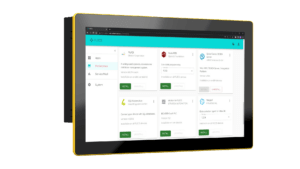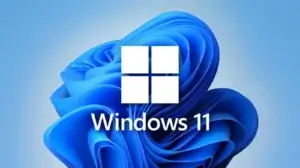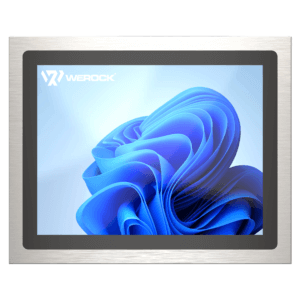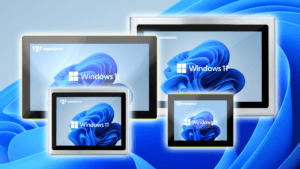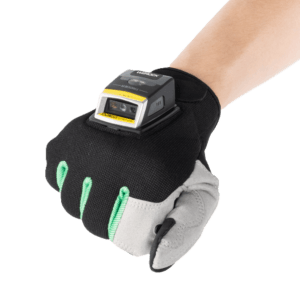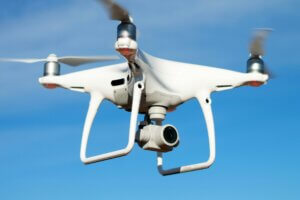Overview of the different barcode types
2/5 Interleaved
Name
2/5 Interleaved
Brief explanation
Numeric barcode with high information density. It is used particularly in shipping and industry. The barcode only allows a low print tolerance.
Use
Shipping and identification of the goods/product
Example

Code 2/5 5 dashes industry (industry code)
Name
2/5 Industrial
Brief explanation
Numeric barcode with low information density. Can be produced using simple printing processes due to high print tolerance
Use
Transport and storage technology
Example

Codabar
Name
Codabar
Brief explanation
Numeric code + 6 additional special characters
(0..9 and – $ : / . +)
Low information density
Use
Libraries, medical sector such as laboratories and blood banks, mail order industry, photo labs
Example

Codablock
In the period between 1989 and 2000, the standardized barcodes 39 and 128 were replaced by a stacked barcode called Codablock, which had found practical application internationally. Problems such as insufficient label width or the printing of several short barcodes in succession led to the realization that the size of the barcodes should have been reduced, while at the same time the complete data context of a message should have been retained. This led to the idea of the Codablock. Each line contains a line indicator for the orientation of the reader. The stack code also contains two check characters so that the content of the entire message can be verified.
There are three types of codablock. Codablock A is based on the structure of Code 39, which can generate up to 22 lines of 1-61 (max. 1340) data each. The check character is calculated according to module 43 as the sum of all character values in a given message and is the last character of the barcode. Codablock F is based on the structure of Code 128, which can print from 2 to 44 lines. These lines correspond to 4-62 data each (max. 2725). The last variant Codablock 256 is identical to Codablock F and has a start/stop character. The same amount of data is generated as with codablock F. All codablock types contain their own error correction so that minor damage can be reconstructed.
The advantages include greater data security when scanning a single Codablock label instead of several individual labels. Codablock increases the flexibility to customize information in height, width and information density. As this stacked code is based on existing barcodes, all conventional readers can read it. A higher-level computer system can reassemble the individual lines into the overall message. You should always be aware of the stacked structure when reading the code in order to avoid reading errors.
Name
Codablock
Brief explanation
Code block A: Based on code 39, up to 22 lines, max. 1340 data; check digit according to module 43.
Codablock F: Based on Code 128, 2 to 44 lines, max. 2725 data.
Codablock 256: Identical to codablock F, but with start/stop character.
All types include error correction for the reconstruction of minor damage. Higher data security, flexible adjustment of height, width and information density.
Compatible with conventional readers
Use
Reading barcodes in images using conventional readers or the smartphone camera.
Example

Code 49
Code 49 is a 2D barcode and meets increased security requirements compared to other barcodes thanks to its three error correction processes. Code 49 was developed in 1987 for logistical tasks in the aerospace industry. It is a variant of stacked barcodes and is based on its own code structure. The number of lines varies from two to eight. Each line contains 70 modules, a start character (2 modules), four data words (4×16 modules) and a stop character (4 modules). The line numbers can be determined during the scanning process by transforming the individual data words into predefined data word combinations. A maximum of 49 SCII characters or 81 digits can be encrypted.
Code 49 stands out in particular due to its compactness. Like Codablock, it also offers flexibility in the adaptation of information. All readers can read Code 49. Nevertheless, the decoder must be extended because Code 49 uses its own barcode. To avoid reading errors, the decoder must capture the entire block of the barcode before the content is transmitted to a computer system. Compared to other barcodes, Code 49 only has a fixed format. It can be created using all printing techniques such as UPC or Code 39.
Name
Code 49
Brief explanation
2D barcode, stacked barcode, line consists of 70 modules, start character, 4 data words and a stop character, very compact
Use
Logistical application in space travel
Example

Code 39
Code 39, also known as “3 of 9” for short, is an alphanumeric character set that was developed by Intermec (USA) in 1973. It contains 0-9 numbers, 26 letters and seven special characters. Each character contains nine elements, which in turn consist of five bars and four spaces. Three elements are displayed wide and six elements narrow, with the exception of special characters. The gap between the characters contains no information. The print ratio between the narrow and wide elements is 1:2 or 1:3. If the narrow element is smaller than 0.5 mm, then a new print ratio of 1:2 and a maximum of 1:3 applies. Code 39 is one of the first alphanumeric codes, but its information density is too low compared to today’s standards. The code can be produced using offset, letterpress, gravure and flexographic printing processes, computer-controlled printing processes and photosetting.
Name
Code 39
Brief explanation
Alphanumeric character set, low information density, consists of the digits 0-9, 26 letters & 7 special characters with high reading reliability.
Use
Application e.g. in logistics, industry and healthcare.
Example

Code 128
Compared to other barcodes, Code 128 contains a high density of information. This barcode allows the full ASCII character set (character coding in the English alphabet) to be reproduced without character combinations. However, it cannot directly display all the characters in the ASCII table. A distinction is made between three character sets A, B and C, which are used for different purposes. The character sets cannot be combined. Only a combination of the start character A or B with a special character allows the complete character set of the ASCII table to be displayed. Each character can be divided into eleven modules or into three dashes and three spaces. The black bars always follow an even number of modules (even parity) and the white spaces follow an odd number of modules. The only exception is the stop character, which contains 13 modules. These 13 modules can be split into 11 modules and a delimiter with 2 modules. The code is used in offset, letterpress, gravure, flexographic printing, thermal transfer printing and phototypesetting.
Name
Code 128
Brief explanation
Alphanumeric barcode, very high information density, mapping of the entire ASCII table.
Use
Clothing industry
Example

DataMatrix code
The Data Matrix Code (DMC) is one of the best-known 2D codes, which was developed by the Acuity Corporation in the late 1980s. The Data Matrix exists in two versions, namely the ECC 000-140 and the current revised version ECC 200. The shape of the barcode is a variable, rectangular pattern, which consists of a minimum square arrangement of 10×10 and a maximum of 144×144 symbol elements. The DataMatrix code can also be represented by 8×18 and 16×48 elements. With the DataMatrix code 144×144 ECC 200, including the search and alignment patterns, it is possible to encode up to 1556 bytes (8 bits per character), i.e. 3116 digits (3.5 bits per character) or 2335 ASCII characters (7 bits per character). The horizontal and vertical borders fulfill the purpose of legibility. The opposite sides of the rectangular pattern alternate with light and dark squares so that the position and size can be described. The information density is 13 characters per 100 mm².
The barcode is used in automotive engineering, for direct laser marking in production (e.g. printed circuit boards), as a printed code image in document handling (tickets, IT franking for mailing) and for analysis devices and instruments in the chemical and medical industries. It is a very compact code with high reading reliability that contains reliable error correction using an RS code. It is still possible to reconstruct the data even if a quarter of the entire code is damaged. One disadvantage of the DMC is that it can only be read with image processing systems. The code can be produced using drivers and various printing techniques.
Name
DataMatrix code
Brief explanation
Compactness that can recover data even if 25% of the barcode is damaged and remains readable. The reason for this is an error correction algorithm. Only readable with image processing systems.
Use
Automotive engineering, direct laser marking in production, document handling, chemical and medical industries
Example

Maxi-Code
United Parcel Service (UPS) developed the Maxi-Code in 1989 for fast identification, tracking and sorting of parcels. This 2D code is a variant of the matrix code and is produced in the size 25.4×25.4mm. 144 symbol characters are displayed on an area of 645 mm², which allows a maximum of 93 ASCII characters or 138 digits to be accumulated. In the middle of the 2D code there is a search pattern which is created for orientation during reading. A honeycomb pattern consisting of 866 hexagons can be recognized around the search pattern. These 866 hexagons are arranged in 33 rows and carry the data content. Each row contains a maximum of 30 honeycomb elements. Six orientation honeycombs are linked with three honeycomb elements each, which are arranged together around the search pattern and are used for position recognition for omnidirectional reading. The information density is 13 characters per 100mm². As the Maxi-Code is one of the compact barcodes, it contains reliable error correction and is therefore very secure. If a quarter of the total code is damaged, it is still possible to reconstruct the data.
This stacked code guarantees omnidirectional readability even at high transport speeds. As it is based on fixed parameters, it can only be read with image processing systems. The barcode can be produced using various printing techniques and drivers.
Name
Maxi-Code
Brief explanation
2D barcode, 93 ASCII characters, fast and secure, only readable with image processing systems
Use
Parcel tracking, labeling parcels
Example

Dotcode
Dotcode is a 2D code that uses a matrix of dots for representation. Dotcodes should not be confused with Braille. In 2009, AIM published the dotcode symbology, which has been standardized since 2012. The codes can be read optically and error correction is carried out using Reed-Solomon.
Dotcodes are used in particular for the rapid printing of industrial or consumer goods in order to identify and track individual units. The codes are also used in the cigarette and pharmaceutical industries. Dotcode A is based on a matrix of 6×6 to 12×12 dots. These dots are either left white or colorless or black, which together form a so-called dot. The combination of empty spaces and dots requires a binary code based on zeros and ones. Due to its small size, a dot code has a high information density. A 7×7 matrix can create more than two billion combinations of spaces and dots after subtracting fixed dots for checks, and thus have more than two billion different identification numbers available in the sense of a fixed code system. However, other data can also be encoded. There is a clear difference between dotcodes and barcodes with the same data content. Dot codes are usually used where the space available for marking is limited, such as on a microprocessor.
Dot codes are also suitable for environments where there is a risk of contamination or damage to the labels, as it is possible to produce a dot code by perforating or embedding it directly into the material. Another important advantage of the dot code is its good legibility. A contrast of only around 15 percent is required to achieve successful reading. A barcode needs a contrast of 50 to 60 percent for good readability.
Name
DotCode
Brief explanation
2D code, compact, robustness against damage and contamination, high information density
Use
Application in the industry, cigarette and Pharmaceutical industry, high information density
Example

EAN
This numeric code can be represented with the digits 0-9. Eleven elements together form one character. Each bar and each space contains information. Either eight or thirteen characters can be displayed. The barcode offers a high density of information in ten different sizes. One disadvantage is the associated low tolerance level. The barcode can be found in offset, letterpress, gravure and laser printing processes, thermal printing above a certain size and phototypesetting. More detailed code specifications for the EAN and EAN 128 can be requested from the national EAN associations.
Nowadays, EAN-13 is the most common product code used on most consumer goods in supermarkets, discount stores, petrol stations, DIY stores, etc. The American equivalent is the IUPC (Universal Product Code). The American equivalent is the IUPC (Universal Product Code) and the Japanese equivalent is the JAN (Japanese Article Number). The code can also be found on books.
EAN 128
The EAN 128/UCC barcode, also known as GS1-128, is a newly developed standard barcode based on Code 128. It is primarily used as a logistics code for retail. In particular, a function character 1 (FNC1) appears immediately after the start character. This sequence of start character and FNC1 at the beginning of the barcode symbol is the typical identification for EAN 128. Only the International Article Numbering Organization (EAN) and the American Uniform Code Council (UCC) are permitted to use this character combination. The maximum length of an EAN128 symbol depends on three parameters:
- The physical length, which depends on the number of characters to be encoded and the magnification factor
- The number of data characters without auxiliary characters
- The number of symbol characters
The maximum length of each symbol must not exceed the physical length of 16 mm, including light zones. The inclusive data identifiers may encode a maximum of 48 user data characters. If the FNC1 character is used as a separator, they are to be counted as user data characters. Auxiliary and symbol characters are not taken into account here. Including all characters, EAN 128 should not exceed 35 characters, as otherwise there would be a risk that an insufficient enlargement factor would have to be selected for cross-company applications. When using character set C, in certain cases the number of user data characters exceeds the number of symbol characters required.
Delimitation of data elements of fixed or variable length:
Data identifiers recognize data elements that are variable or have a fixed length. If several data identifiers and the corresponding data content are linked in a symbol, each variably defined data element must be followed by an FNC 1 character. The exception only applies to the last data element encoded in the symbol. A separator is not required for data content of fixed length. A table with predefined length indicators has been created to determine the length of a data element with a fixed number of digits. Some of the indicators listed in this table are already used today as individual data identifiers such as “00” or “01”. Other indicators in the table have been incorporated into a number of data identifiers, such as “31” or “41”. The table determines the total length of a data element, which is made up of the data identifier and data content. However, it is not possible to draw any conclusions about the number of digits in the data identifier or the format of the data content (alphanumeric or numeric). Furthermore, all elements not listed here are delimited at the end by an FNC1 character or a stop. However, it is not possible to separate new data elements cleanly with FNC1.
Data content: The following data contents for a data identifier correspond to the respective application description. They are defined numerically or alphanumerically and are up to thirty characters long. The intended length of the data fields for setting the data content is fixed or variable. With fixed-length data fields, the required number of characters (numbers and/or letters) is always set. Sometimes a data field must be left-aligned with zeros in order to achieve the required number of digits. A maximum number of encoded characters applies to variably defined data fields. This maximum value must never be exceeded.
Name
EAN (European Article Numbering)/UPC (Universal Product Code)
Brief explanation
2 to 13 characters. High information density, but very low print tolerance. Check digit is required. It is an internationally defined numbering scheme.
Use
Product labeling, e.g. for retail items, packaging, electrical goods and medical products.
Example

GS1 barcodes
GS1 is a network of organizations that develop, negotiate and maintain standards for cross-company processes worldwide.
GS1 barcodes can be used to generate unique identification keys for almost all objects that are relevant in B2B and B2C business.
GS1-128
The old designation of the GS1-128 is EAN/UCC-128, which is a special form of the Code-128 that records data structured according to the GS1 specifications. As a special recognition feature, a special character (FNC1) follows immediately after the start character. This signals to the scanner software that the code content is structured according to GS1 specifications.
In addition, several pieces of data can be coded at the same time. For example, in addition to the product code, weight information and the best-before date can also be included. For this to be realized, so-called application identifiers must be used. These are internationally standardized data identifiers.
Even if the length of the code is variable, the maximum length should not exceed 165mm.
Name
GS1-128
Brief explanation
Special form of code 128; max. 48 characters; encoding of several data simultaneously possible.
High information density
Use
Trade and industry, primarily for labeling goods and pallets
Example

GS1 DataBar/RSS
The RSS code, now called GS1 DataBar, consists of three basic variants. RSS-14 encodes 14 digits of numeric data (GTIN) and contains one digit that is used as a shortcut character from 0 to 9. RSS Limited is more compact than RSS-14, as only one shortcut character (1 or 0) is required to encode the same RSS-14 data (GTIN).
The RSS Expanded code is the variable variant that can encode data of different lengths. The RSS Expanded can contain up to 74 digits or 41 characters, depending on whether the EAN / UCC data identifier is used. Both code RSS-14 and RSS-Expanded can be stacked. The RSS-14 Stacked consists of 2 lines.
The RSS Expanded Stacked even has up to eleven lines to reduce the length. Composite codes always consist of a barcode (or stacked codes in the case of the RSS-14 Stacked) and an additional 2D component directly above it. A special pattern is used to separate the two parts of the code. Composite codes can also be divided into three variants. The CC-A variant is based on the Micro PDF417, which enables coding of up to 56 alphanumeric characters and can be combined with the EAN / UPC code (except ITF-14). The CC-B variant is also based on the Micro PDF417, which can encode up to 338 alphanumeric characters. This variant can also be combined with all EAN-UPC codes (except ITF-14). The CC-C variant is based on the PDF417 code and can only be combined with UCC / EAN-128. Up to 2,361 characters can be encoded.
One of the greatest advantages of this code is its compactness. This barcode is one of the most compact on the market today, meeting the demand for more information in a small space with omnidirectional reading methods. This code type creates a completely new way of using the EAN / UCC system on small products, which was previously not possible with barcodes. It is particularly interesting for the retail, food and healthcare sectors. There is a small disadvantage in the readability of the code. Composite codes can only be read with 2D readers. The code can be produced using offset, letterpress and gravure printing, flexographic printing, phototypesetting and online printing technology such as laser printers, thermal and thermal transfer printers.

Name
GS1 Databar/RSS
Brief explanation
Compact barcode, three variants: RSS-14, RSS Limited and RSS Expanded, additional “stacked variants” are also available.
Use
Retail, food industry, healthcare
Example

Identcode
The Identcode is a numeric 12-digit barcode used by Deutsche Post AG. It is based on Code 25 Interleaved, but uses a different checksum and contains the unique identification of a postal parcel. This means that the parcel can be tracked from acceptance to delivery. In combination with the routing code, it is used for automatic distribution within parcel centers.
Numbers 1 to 2 contain the outgoing freight center, numbers 3 to 5 the customer ID (assigned by Deutsche Post), numbers 6 to 11 the posting number and number 12 is the check digit.
Name
Identcode
Brief explanation
12-digit numeric code (0…9) that encodes the unique identification of a postal parcel in machine-readable form
Use
Deutsche Post AG
Example

Leitcode (DHL)
The routing code (Leitcode) is a numeric 14-digit barcode used by Deutsche Post AG. It is based on Code 25 Interleaved, but uses a different checksum and contains the recipient data on freight items. In combination with the identcode, it is used for automatic distribution within parcel centers.
Digits 1 to 5 contain the unencrypted representation of the zip code, digits 6 to 8 the street code (each street name is assigned a 3-digit code), digits 9 to 11 the unencrypted representation of the house number. If the house number has 4 digits, a different street code is used. Digits 12 to 13 contain the product types, such as parcel, package, return, etc. and digit 14 is the check digit.
Name
Leitcode (DHL)
Brief explanation
14-digit numeric code (0…9) that encodes the recipient data of a freight consignment in machine-readable form
Use
For automatic distribution within Deutsche Post AG parcel centers
Example

Intelligent Mail
The “Intelligent Mail Barcode” (IMb) is used for sorting and tracking mail both nationally and worldwide. It is an improved version of the PostNet barcode, as it encodes not only the recipient data but also the sender data.
Coding is based on the bar height and not, as is usually the case, on the bar and spacing width. Nevertheless, the distance between the bars also plays a role in the coding. A maximum of 31 data digits can be displayed on 65 bars.
Name
Intelligent Mail
Brief explanation
Numeric code (0…9) that encodes the recipient and sender data in machine-readable form; is increasingly replacing PostNet barcodes
Use
Mail sorting and tracking USA
Example
ISBN barcodes
The International Standard Book Number (ISBN) is used to uniquely identify books internationally. Registration of an ISBN is not a legal requirement. Small and self-publishers prefer not to do so, as registration involves effort and costs.
In Germany, only MVB Marketing- und Verlagsservice des Buchhandels GmbH assigns ISBN publishing numbers and individual ISBNs. The ISBN has only been a 13-digit numerical code since 2007. Until the end of 2005, this was still 10 digits. An ISBN consists of 5 groups of numbers. The prefix 978 or 979, the group or country number, followed by the publisher number, title or volume number and, last but not least, the check digit.
Name
ISBN barcode
Brief explanation
13-digit numeric code (0…9), divided into 5 groups of numbers (prefix, country, publisher, title number and check digit)
Use
International labeling of books
Example

ISSN barcodes
The International Standard Serial Number (ISSN) is used to identify serial publications, e.g. journals. The ISSN is similar to the ISBN for books. It is based on the ISO 3297 standard and was adopted in 1975.
The ISSN is an 8-digit code, which is divided into two groups of four digits each. Unlike other codes, it cannot be traced back to publishers or other information. Both groups are visually separated by a hyphen. The last digit is a check digit and can also be represented as an X for checksum 10.
To use the ISSN as a barcode, the prefix 977 is placed before the first 7 digits. Digits 11 and 12 are used to identify special or duplicate editions. If these are not required, there is only a 0 here. Digit 13 is then a check digit.
Name
ISSN barcode
Brief explanation
8-digit numeric code (0…9); standard ISO 3297; subdivision into two groups of four digits each; optical separation by hyphen
Use
Labeling of consecutive publications
Example

ISMN barcodes
The International Standard Music Number (ISMN) is used to identify printed and digital music notations worldwide. It is based on the 10957 standard, was designed in line with the much better-known ISBN and was adopted in 1993. As of 2021, it is used in over 64 regions and countries.
The ISMN is a 13-digit code that is divided into four sections. The code always begins with 979-0 and can therefore be distinguished from the ISBN. The next block of digits stands for the publisher ID. Depending on the size of the publisher, this can be 3 to 7 digits long. This is followed by the product ID, which can have 1 to 5 digits. Both blocks together must always have 8 digits. If the publisher ID has 4 digits, the product ID must also have 4 digits; if the publisher ID has 3 digits, the product ID must have 5 digits, and so on. As is often the case, the last digit is a check digit.
Name
ISMN barcode
Brief explanation
13-digit numeric code (0…9); standard 10957; divided into four sections: prefix (always 979-0), publisher ID (3 to 7 digits), product ID (1 to 5 digits), check digit; both blocks together always 8 digits
Use
Labeling of music notation in printed or digital form
Example

ITF-14
The ITF-14 is an outer carton code that is also referred to as SCC-14 (SSC = Shipping Container Code), GTIN-14 and EAN-14. This means that several units of a product can be scanned quickly and easily using the code on the outside of the outer carton or pallet. The product itself must be labeled with an EAN-13 code.
First digit (1): Identifies the packaging type (defined by the supplier), value range from 1 to 8.
Digits 2-13: Contain the actual product code.
Last digit (14): A check digit calculated by a mathematical method such as the modulo or Luhn algorithms to detect input errors
Name
ITF-14
Brief explanation
Outer carton code
Numeric code with 14 characters (0.9), which contains the EAN-13 code of the contained product
Use
Retail trade
Example

MSI/Plessey
This numeric barcode is also known as Modified Plessey or MSI. It is used on shelves in supermarkets, warehouses and libraries, among other places. It can encode information about the product, the target stock level and other relevant data.
The digits 0 to 9 are displayed in binary code. There is also a start and stop character and an optional check digit. The length of the barcode is variable and even large amounts of data can be encoded. However, it is inefficient and prone to errors.
Name
MSI/Plessey
Brief explanation
Numeric code (0..9), variable length, check digit optional
Use
Supermarkets, storage facilities, libraries
Example

NVE/ EAN-18/ SSCC-18
The “shipping unit number” (SSCC) is represented by the SSCC barcode and serves as a globally unique identifier for a shipping unit. A shipping unit can be a container, pallets or cartons, for example. In international shipping, the designation SSCC-18 (Serial Shipping Container Code) is often used, in national shipping EAN-18.
This is represented using the EAN-128 character set. The first two characters are therefore predefined as application identifiers with (00). Digit one of the data field is an extension digit, which can be freely selected between 0 and 9 by the creator of the SSCC. Digits two to eight are the GS1 base number of the sender. These are defined by the GS1 member organizations. Numbers nine to seventeen are the numbers generated by the sender. These must be consecutive and unique for each shipping unit. The last digit is a check digit, which is determined by calculation.
Name
NVE/ EAN-18/ SSCC-18
Brief explanation
Numeric code with 18 characters (0..9), representation with EAN-128 character set
Use
Transportation, storage
Example

PDF 417
This barcode is a variant of the stacked barcode, but is based on its own code structure and is not square as usual, but rectangular. PDF stands for Portable Data File. 417 for the pattern, which consists of 4 bars and 4 spaces. Each pattern is in turn 17 units long.
PDF 417 can encode up to 1,108 bytes (i.e. a maximum of 1,850 alphanumeric characters or 2,710 digits), the barcode is flexible in height and width and yet very compact. Eight different correction levels can be selected to compensate for up to 50% damage.
The barcode consists of two external rest areas, one start and one stop pattern, two indicator areas and the data area.
Name
PDF 417
Brief explanation
Up to 1,108 bytes (i.e. a maximum of 1,850 alphanumeric characters or 2,710 digits) can be encoded; variable length and height; very compact; 8 correction levels can be selected; can be read with a 1D scanner, provided it can capture the entire block
Use
ID documents, file management, transportation, logistics, franking machines, FedEx parcels, airline tickets, Certificates of incapacity for work, lottery receipts
Example

PostNet
The “Postal Numeric Encoding Technique” is a coding technique used by the US Post Office to encode the recipient’s postal code in machine-readable form and thus automate the sorting of mail.
PostNet barcodes can have 5, 6, 9 or 11 digits and are coded using the bar height and not the usual bars and spaces. They only contain digits, a start and stop character and a check digit. Each character is represented by 5 bars.
The Intelligent Mail barcode is increasingly replacing the PostNet barcode as it can encode more information.
Name
PostNet
Brief explanation
Numeric code (0…9) that encodes the recipient’s zip code in machine-readable form; variable length; low information density
Use
Mail sorting and tracking USA
Example
PZN
The “Pharmazentralnummer” is based on Code-39 and has consisted of 7 digits + check digit since 2013 (previously only 7 digits). It is used for the nationwide standardized identification of medicines, medical and other pharmacy products. The PZN is assigned individually for each product by the Information Center for Proprietary Medicinal Products. This enables clear identification by name, dosage form, active ingredient strength and pack size.
Formerly also known as PZN7, this may no longer be issued since 01.01.2013 and lost its validity on 31.12.2019. Its successor is the PZN8 described above and offers a larger number range due to the additional number.
Name
PZN, PZN8
Brief explanation
Numeric code (0…9) that encodes the recipient’s zip code in machine-readable form; variable length; low information density
Use
Pharmaceuticals, medical devices and other pharmacy products
Example

QR code
The “Quick Response Code” is a square 2D code that typically consists of a black and white pixel structure. It is now also possible to design it in color and/or incorporate a logo. It is only necessary to ensure sufficient contrast.
Due to the special marking in three out of four corners (usually large squares), the code can be read from any position. Further advantages are the storage of large amounts of data and the high error tolerance. Even if up to 30% of the code is lost, readability is guaranteed, depending on the error correction level selected.
Originally developed by Denso Wave (a subsidiary of Toyota supplier Denso) to optimize logistics processes in automotive production, it is now mainly used for communication between companies and private individuals.
In addition to the classic QR code, there are also some further developments. The best known are
- Micro QR code: smaller, but also smaller data volume
- iQR code: larger data volume (up to 40,000 numerical characters), error correction level up to 60%, rectangular display, 30% smaller than a normal QR code with the same amount of data
- Frame QR code: Empty space inside, which can be filled with a logo or image
Name
QR code
Brief explanation
Versatile code, large data volume, readability even if up to 30% of the code is lost, also readable with camera phones and smartphones
Use
Production logistics, numerous application possibilities, e.g. web links, mobile business cards, etc.
Example

RoyalMail (RM4SCC)
The Royal Mail 4 State Customer Code converts mail into a machine-readable format by encoding the zip code and house or PO box number. Originally developed in Great Britain, it can now also be found in other countries. However, the content can vary from country to country.
The digits 0 to 9 and the letters A to Z can be encoded. Each character is represented by a sequence of four dashes.
Name
RM4SCC
Brief explanation
Variable length, display of digits (0 – 9) and letters (A – Z) possible
Use
Originally for postal companies
Example

UPC barcodes
The “Universal Product Code” (UPC) is used in retail to uniquely identify products. It does not matter in which retail stores the product is sold, because the same products share the same UPC.
Only the digits 0-9 can be displayed with the UPC code. Special characters or letters may not be used. Each character consists of two bars and two spaces of different widths.
The most common UPC code is the UPC A code, which is similar to the EAN code. The normal version has 12 digits, the compressed version has 8. The structure is the same. The first digit designates a so-called “number system”. This is used to classify the product – for example, normal product, coupon, medicine, item calculated by weight, etc. Digits two to six identify the manufacturer and are assigned by GS1 member organizations. Digits seven to eleven provide information about the product. The last digit is a check digit, which is determined by calculation.
The encrypted characters are usually written as plain text under the barcode. This means it can also be used if it is not legible.
Name
UPC A
UPC B
Brief explanation
Numeric code with 12 characters (0 – 9), high information density
Compressed version of UPC A, 8 digits instead of 12
Use
Supermarket and retail, mainly in the USA
On smaller products, if the packaging does not provide space for the normal UPC A.
Example


Other barcode types
There are also 3D and 4D barcodes, which are still rarely used today. The third dimension of 3D barcodes is achieved using colors. Here, use is made of color saturation and brightness of the color. On the other hand, 4D barcodes are animated barcodes in which time is used as a dimension. A sequence of different barcodes is played, resulting in a composite piece of information. A major advantage of this is the transmission of significantly more information.

